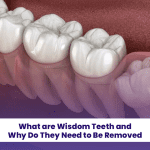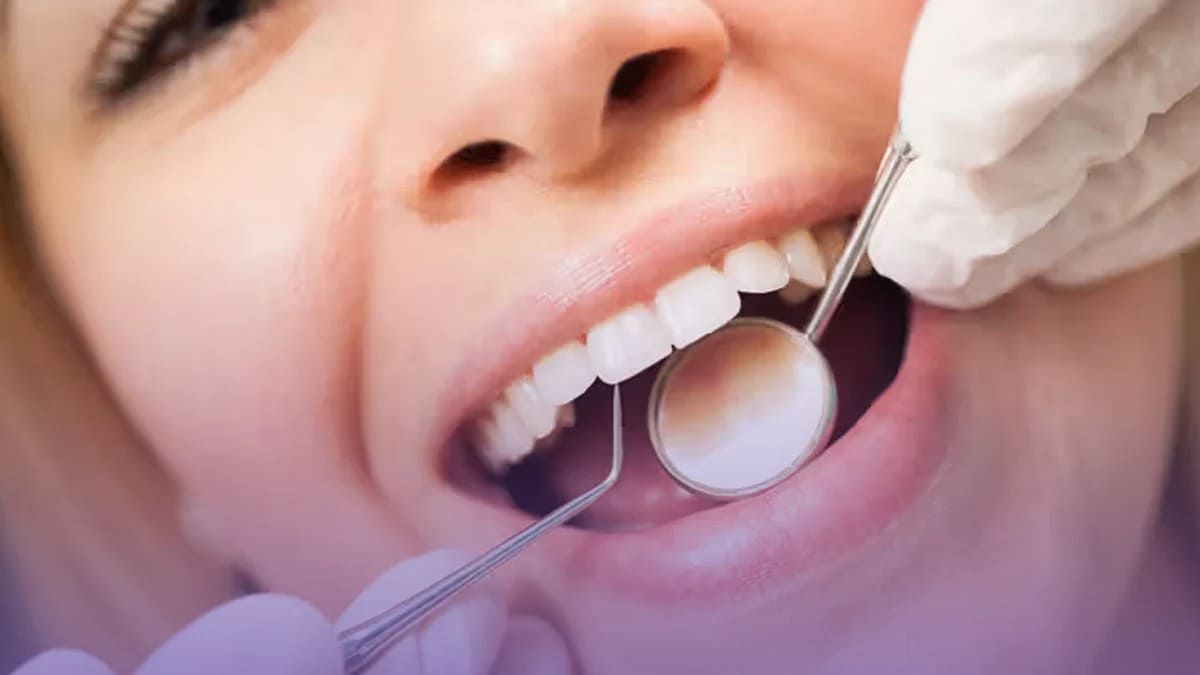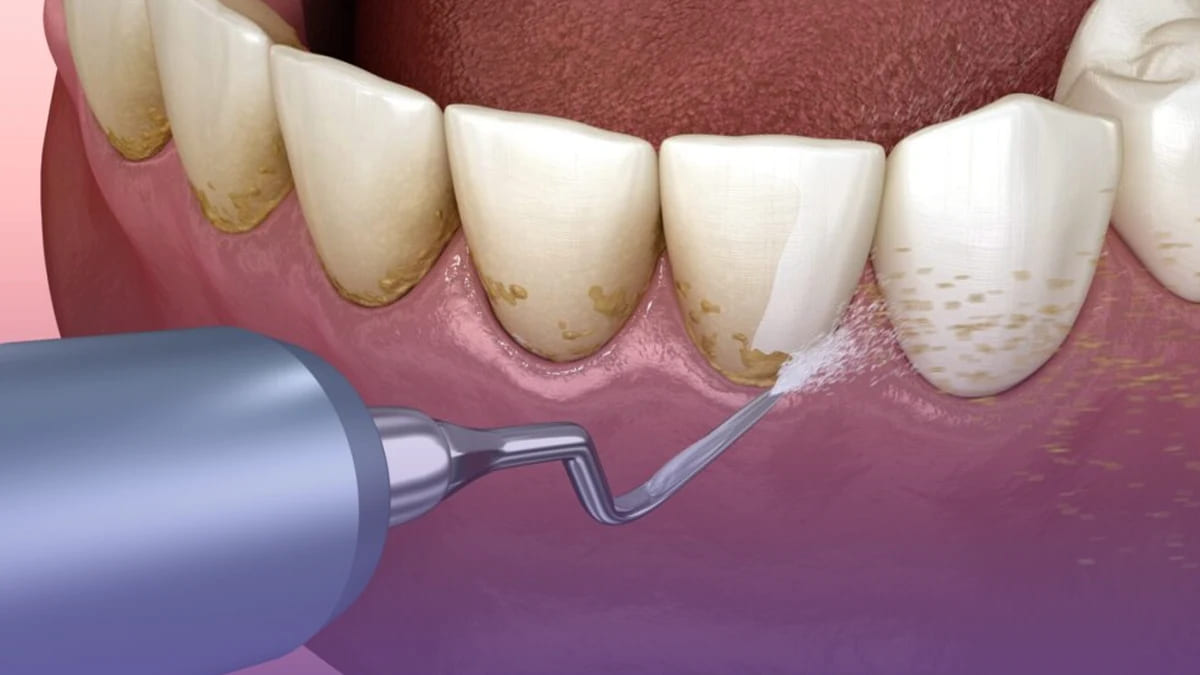
What Is Aesthetic Dental Care? Everything You Need to Know Before Your First Visit
10 July 2025
What are Wisdom Teeth and Why Do They Need to Be Removed?
10 August 2025The Truth About Tartar Cleaning: Is It Really Necessary?
Tartar removal is amongst the most frequently suggested dental procedures; nevertheless, many still question whether one needs it to maintain the health of their oral cavity. Tartar, having become a dental calculus, is hardened plaque that clings stubbornly to the teeth and can be removed only by professional care. Brushing and flossing, of course, are necessary, but to counteract the long term accumulation of tartar, it is not enough.
Understanding whether tartar removal is essential involves knowing how tartar is formed and what it threatens. Tartar, other than its cosmetic effects like yellowish stains or bad smells, is a risk factor for gum disease, cavity, and eventually tooth loss. We shall go into the science, urgency, and service options concerning tarter removal, both by way of professionals and home care.
What Is Tartar and How Does It Form?

Tartar develops when untreated plaque forms and hardens on the teeth. Matty, plaque is a thin film of bacteria that is invisible to the human eye. If the plaque is not cleaned at least once every day, minerals in saliva begin to crystallize with this plaque and give rise to hardens called tartar within 24 to 72 hours. These hard deposits strongly adhere to tooth enamel and extend below the gum line, which makes tartar very difficult to remove without professional tools.
There is more to tartar than just its ugly hue. Once tartar forms, new bacteria find it an ideal surface on which to cling and grow, resulting in irritation of the gums and consequent recession of the gums, and eventual progression to periodontal disease. In short, tartar formation is slow but hangs around; so tartar cleaning has to be something constant, a preventive endeavor.
Not even the best oral hygiene regimens can guarantee that you lose all tartar formation; therefore, visiting your dentist is very crucial. Regularly scheduled visits to your dentist help in identifying the buildup early and will allow for timely removal of tartar to prevent buildup of more serious oral issues in later stages.
Is Professional Tartar Removal Necessary?
Many people think they can manage tartar buildup with daily brushing or the over the counter plaque remover. In reality, such a method may aid in reducing plaque; however, it will almost never work on hard tartar. The very best and safest method of removing tartar remains with professional detertraj a procedure that involves scaling and polishing.
Dentists work with specialized instruments or ultrasonic devices that break down the tartar without affecting the enamel. These instruments can reach the defending tartar under the gum line and between neighboring teeth areas that the regular brush or floss can hardly reach. Although home based tartar removal has become “in” with so many gadgets hitting the market, none can rival the accuracy of a professional dental cleaning.
Leaving tartar removal aside may seem harmless with dire long term consequences like some stages of gum recession, infections, and tooth loss. Preliminary treatment through the scheduled cleaning will save your beautiful smile while also cutting down on the costs of dental treatments later.

How Tartar Affects Gum and Overall Health
Tartar does not constitute the mere danger to the teeth; it is detrimental to systemic health. The bacteria present in dental tartar can gain access into the bloodstream through inflamed gums and may elevate one’s risk for heart diseases, diabetes, and maybe even respiratory infections. That ensures that plaque removal truly is the step beyond pristine smiles.
Periodontal, or gum disease, often starts off with gingivitis due to plaque and tartar accumulation. The early warnings are swollen, bleeding gums and a bad smell that does not seem to fade. If left untreated, this disease may evolve into periodontitis, where the gums detach from the teeth and form pockets that trap more bacteria.
If tartar is correctly removed, this process is stopped before it can become worse. With regular cleanings, the dentist basically presses that reset button for your mouth. It removes the tartar and reduces inflammation and bacterial bombardment that could affect your overall health.
At Home Solutions: Are They Effective or Risky?
Since the advent of DIY dental care, some have tried to remove the plaque at home. These tools may include plaque scrapers, an electric toothbrush, or the trending ultrasonic plaque remover. While some reduction of soft plaque may occur by these means, any hardened tartar will remain unaffected, and if misused, such devices may cause considerable damage.
Over the counter preparations advertised as the top plaque removers usually contain abrasive ingredients. These just polish the surface of your teeth and do not dissolve the tartar; occasional use may be a bit abrasive, but too frequent use could erode the enamel. In the same way, physical scrapers for home use can injure the gums if not handled properly and may lead to infections.
The Role of Diet and Lifestyle in Tartar Prevention
Tartar accumulates according to what one eats and how one lives. Diets high in sugar and starch act as food for the bacteria in plaque, hastening the formation of tartar. On the contrary, foods like crunchy fruits and vegetables can act as a natural cleanser to the surface of teeth while also stimulating saliva production.
Making the bind of tartar is chief among the tobacco induced effects. It diminishes saliva flow; also, its pH altering property favors bacterial proliferation. Should you espouse long term tartar removal, quitting tobacco stands as one of the righteous things to do for your oral health.
Good daily oral hygiene routines brushing twice, flossing, and mouth washing help the prevention of tartar reoccurring post professional dental cleaning. These lifestyle changes, small as they may be, make so much difference in creating a lasting tartar free and healthy smile.
Tools and Products That Help Fight Plaque
Some of the most accepted tools for controlling plaque between dental visits are these options: Generally considered the best way to take away dental plaque are electric toothbrushes that provide oscillating or sonic cleaning. These will minimize soft plaque accumulation before it hardens to tartar.
Floss picks and water flossers also work well in reaching tight spaces between the teeth. Paired with a fluoride toothpaste containing tartar control agents, your everyday oral hygiene routine will go farther. Some go for deeper cleaning with a gel or rinse type plaque remover for teeth.

Still, these are not capable of replacing professional tartar removal when it gets built upon the teeth. They consider them to be part of the oral care system being kept up by professional cleanings, whereas the daily regime working to sustain those results.
How Often Should You Get Tartar Removed?
Tartar cleaning is usually recommended biannually by dental professionals during a routine checkup. However, the specifics may vary according to oral status, medical background, or lifestyle habits. More frequent removal may be necessitated for patients with a history of gum disease, or for smokers.
Tartar deposits may grow with time and embed deeper within the gum pockets when tartar removal is delayed. Hence, cleaning becomes difficult and, sometimes, painful. Tartar formation also can occur below the gum line and often goes undetected unless some symptoms, such as swelling or bleeding, appear.
Besides scaling to remove tartar, regular visits allow for a continuous check on the health of the mouth, so any problems may be found and looked at:right away.
The Verdict: Is Tartar Cleaning Really Necessary?
After talking about science, risks, and preventive measures, the answer stands clear: Tartar removal is absolutely necessary and is required for healthy gums and teeth against decay and diseases. It should help maintain overall well being, whereas any negligence leads to serious complications, which are more expensive and painful to treat.
For some, going to the dentist is a task hard to finish. Not anymore, though; modern technique makes things quick, effective, and barely painful. The benefits of a clean, healthy smile for a long time surely outweigh the short term discomfort of professional cleaning.
These include following their advice for at home care, investing in good plaque removers for teeth, and watching one’s diet and habits. However, nothing can compare to the efficacy and safety of routine, professional tartar removals in assuring lifelong oral health.
Tartar Removal at Home: A Word of Caution
Even while many are after the best ways for tartar removal at home, maintaining realism becomes necessary. Home remedies like baking soda, coconut oil pulling, or vinegar rinses might soften the plaque on the surface, but hardened tartar cannot be removed. A few tools for home use might be able to scrap off light plaque, but there is a potential for harm if mishandled.
Self care lands a fine line between maintenance and harm. This is why dentists recommend against attempting full detertraj procedures at home. If used without professional knowledge, ultrasonic plaque removers can chip away enamel or cause gum recession and infection.
Should you ever desire to tend to your own dental hygiene without going to a dental clinic, always ask your dentist for the safest plaque remover for teeth or for recommended products tailored to your need, minus hazards.
Hence, it can be said that tartar removal is not just an aesthetic treatment or something which can be optional but is an essential procedure for the preservation of oral and general health. Although home remedy treatments can assist in managing plaques, tartar can be better, effectively, and safely removed by professionals. Such goodies as the best plaque remover, the special brushes, the toothpaste, and mouth rinses can serve as nice additions, but certainly not substitutes for a worthy dental check.
The real key is consistency itself. Brushing, flossing, diet, and regular dental visits are a good recipe for success. Tartar may be persistent, but it’s not impossible to beat. Be patient with your oral health, and your smile will last forever.













